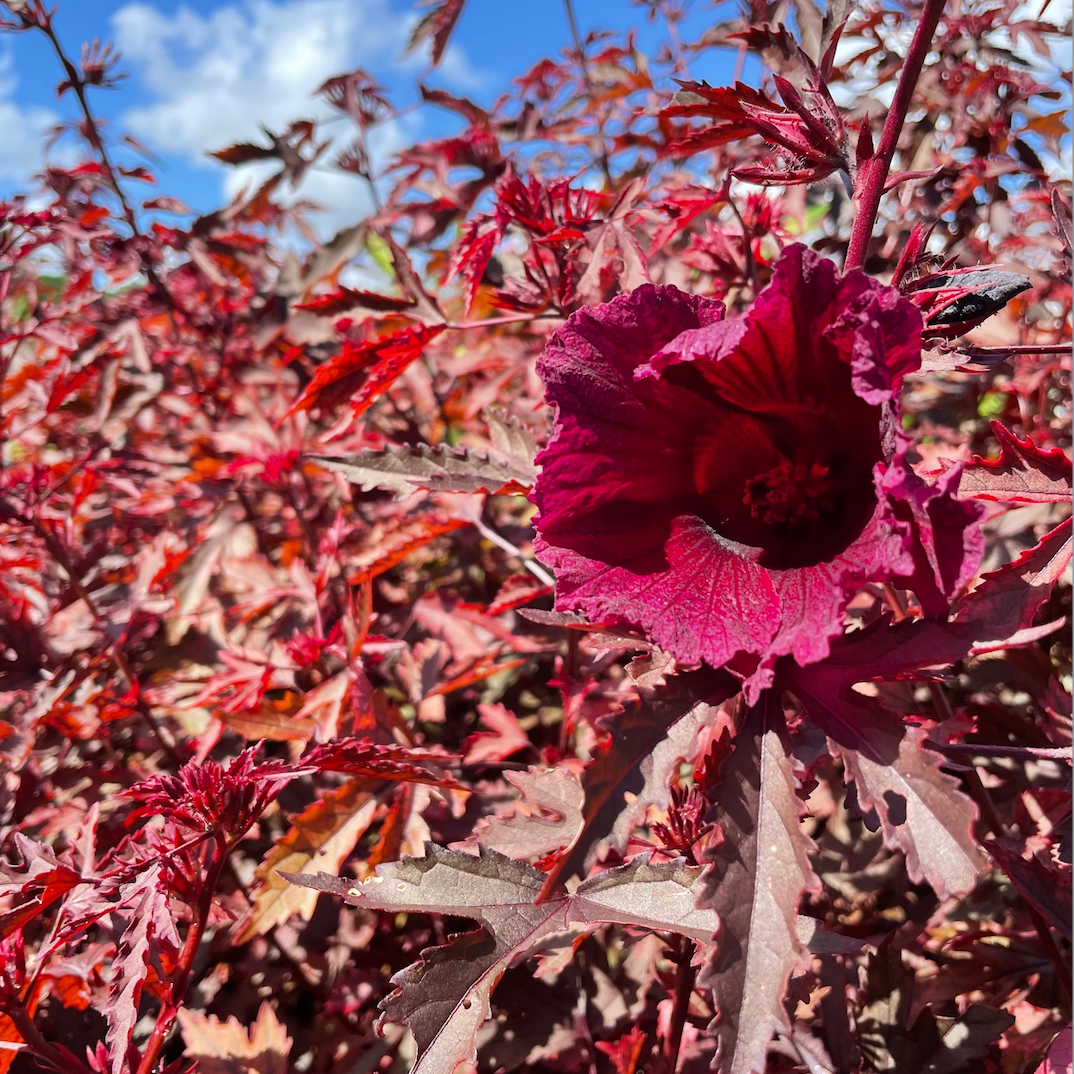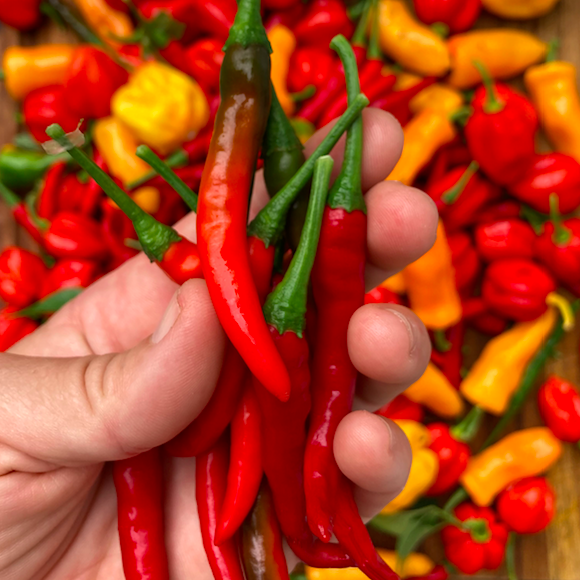June Gardening: Planting Perennials & Putting Your Veggie Garden "To Bed"
June is the true start of the rainy, humid & extra hot summer here in South Florida. It rains an average of 6” during the month of June, with average temperature highs of 88 and solid 100% humidity day and night. This is an incredibly challenging environment for plants that aren’t used to it and aren’t meant to grow in humid and wet climates. Luckily for us there are a bunch of cool plants, and in particular perennials, that thrive in this climate. We think June is the perfect time of year to plant new tropical fruit trees, because you get them in the ground right as the rain starts up. Tropical climate plants love rain and they love the humidity, so if planted now they will grow so fast through the summer you’ll be amazed!
Our favorite trees to plant are ones that produce fruit within the first year and also don’t get so big that they become the only thing in your yard 15 years later (hello mango and avocado, we see you being huge trees all over town). These fruit tree specimens also act as a great “canopy trees” if you’re hoping to plant yourself a Food Forest Guild. A food forest is a perennial planting that mimics the way nature designs a forest but uses all edible or useful plants. And a guild is a grouping of plants using that design system. Heres a diagram to help explain what a guild looks like. The idea is to choose plants that need different space in the air and on the ground so that they don't have to compete for those resources as they grow. These plantings are low maintenance because most of the plants are perennial (that means they grow for more than 1 year) and so they grow slower than veggies and require little inputs outside of regular fertilizing, mulching, and weeding.
Here in these drawings Muriel made for our website you can see that the largest plant in the system is not a "overstory" tree but rather a "midstory" because we want to be able to produce food quickly and also keep the biodiversity of the other layers for years to come. The easiest way to create yourself a guild is just to go through and pick one plant from each category that you want to grow and then go for it! Once you become more experienced you will realize there are other nuances to consider, like watering needs or fertilizer requirements, but to get started you can use "what do i want to grow and eat" as a good decision making factor.
Heres a few examples of fun and easy to grow perennial plant guilds. Note I focused on EASY TO GROW, so I'm choosing low maintenance, fast growing, less rare items here, because its great for beginners to start with easy stuff and slowly lean into the harder more rare items as they gain knowledge.
MIDSTORY: Guava
Guavas are one of our favorite fruit varieties to grow for home gardeners. They are easily grown, delicious, and a high yielding small tree; a two year old tree potentially producing hundreds of fruit per season. Pink fleshed guavas are incredibly floral, pungent and aromatic. These trees are in the myrtle family and produce beautiful flowers and thick leaves. Guava remain quite small and should be considered a “lower canopy” food forest tree. Beware worms in the growing tips of your trees (if they show up and do damage simply spray with Organic Thuricide) and fruit flies laying their eggs in your immature fruit (commercial guava groves put mesh bags on all fruit to avoid this pest issue).
UNDERSTORY/ SHRUB LAYER: Roselle & cranberry hibiscus
Both of these beautiful shrubby plants are in the mallow family along with okra, ornamental hibiscuses & cotton, and they love the summer. Roselle is the source of hibiscus tea, and produces beautiful seed pods called "calyxes" that have fleshy petals around them. Thats what you make the tea out of, or you can just eat them fresh in salads, preserve them in syrups or jams, use the stems as cut flower branches... they really are the most amazing plant with so many uses. Its cousin, cranberry hibiscus, makes beautiful red maple shaped leaves that are tart and high in vitamin C.
HERBACEOUS LAYER: Hot Peppers & Lemongrass
When it comes to hot peppers, the hotter they pepper the easier the plant to grow in heat, for some reason. I think it has something to do with the pests not liking the flavor/ amount of capsicum in the leaves, but thats just a guess. Your main issue with growing peppers in the summer is spider mites, but as i said they tend to leave the super spicy ones, like scotch bonnet, datil, and thai chilli alone. Peppers are actually perennials but if you live somewhere with a frost it will kill them, which is why theyre treated like annuals all over the country. Here in South Florida they will become perennials and can sometimes last years and years. Lemongrass is a great herb with many uses, both culinary and medicinal and its super easy to grow down here. It also adds a fun texture and shape to your garden since its a grass.
GROUNDCOVER: Cuban oregano & sweet potatoes
Cuban Oregano is a super easy to grow and cute low growing plant that is very well suited to a perennial plant guild. It can be pruned and shaped into whatever form you'd like based on where your other plants are growing, and its easy to cook with. Sweet potato is a great ground cover for a food forest because it makes you two harvests: the leaves and the root. The root needs like 4-5 months to grow but you can harvest the leaves and use them to cook with anytime. The more you harvest your leaves the better for root growth actually, since it discourages leaf growth and forces the plant to put some energy into the more challenging task of making root tubers.
This is a small guild in my backyard consisting of bananas, lemongrass, datil spicy peppers, ginger, rosemary, cranberry hibiscus, and sweet potato. Now you may be thinking…. Fruit trees are cool but what about my veggie garden beds? What the heck do I do with them during June and through the rest of the summer!? there are a number of options for you to consider in how to manage your raised garden bed during the summer.
One option is to plant a summer garden. This option is awesome for people who will be home most of the summer and want to keep experiencing their garden. In South Florida we can grow some pretty fun crops during our tropical monsoon season which are considered exotic and rare in other parts of the country. Things like ginger, lemongrass, Asian eggplants, hot peppers, roselle hibiscus, taro and sweet potatoes! A lot of common kitchen herbs grow during the summer as well, for example rosemary, thai basil, garlic chives and mint. There are some challenges to growing a summer garden, like keeping it weed and pest free. Pest pressure increases during the hotter and more humid rainy months because they reproduce faster, and the same can be said about weeds.
Another option is to put your garden “to bed” using the lasagna technique, which refers to adding layers of organic material to your garden that will break down over time, resulting in nutrient-rich compost that will help your plants thrive in the following growing season. We suggest layering the fresh plants that you are removing from your garden with horse manure, top soil and finally a layer of straw to cover the surface of your garden which will keep it weed free and pest free for the long summer months of June-September. Through the summer the material will basically compost on your garden bed and will slowly decompose, turning into new compost & soil right on the spot. In October your garden soil will be richer and more pest free than before for even better Fall crop results. One key to making this technique work is making sure that the top layer of straw (coastal straw can be purchased at any local feed stores) is super duper thick so that it doesn’t decompose and instead acts like a weed barrier to keep the garden weed free while it sits.
Another great option is planting cover crops in your raised bed. Cover cropping can sometimes be confusing to explain but basically you plant a specific plant (in Miami the most popular ones are Sunn Hemp & Buckwheat) very densely in your bed and once its mature (30 - 60 days) you cut it down and compost it in your garden bed. This is also a technique used for soil building, weed suppression, and continued pest management. If you’d like to try cover cropping we sell Sunn hemp & Buckwheat seed per pound on our website where you can also learn more about each type and how to manage it. The bonus to using sunn hemp is that is sequesters nitrogen in the soil for you, which basically means you are growing yourself organic fertilizer. Buckwheat is great to use because its fast growing and easier to cut down and incorporate into your soil… plus pollinators go absolutely nuts for the flowers. Cover cropping is a big part of organic soil based farming practices so we love to encourage home gardeners to give it a try on a smaller scale.
So wether you cover crop your garden, replant it with summer crops, or choose to plant yourself a perennial food forest guild, theres plenty to still be done in the June garden!










